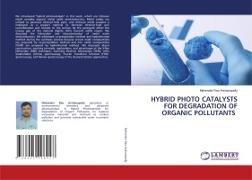Read more
We introduced "hybrid photocatalysts" in this work, which are chitosan metal complex support metal oxide semiconductors. Metal oxides are utilized to generate electron-hole pairs, and chitosan metal complex is employed as a support material to decrease electron-hole pair recombination and transfer to the surface. By the synergetic effect the energy gap of the material slightly shifts towards visible region. We discussed the fabrication and characterization of metal oxide semiconductors. We addressed co-precipitation method and hydrothermal method during the synthesis process because cerium oxide nanoparticles are prepared by co-precipitation method and iron oxide nanoparticles (IONP) are prepared by hydrothermal method. We discussed about construction, working principle, applications, and advantages of the X-Ray Diffraction (XRD) technique, Scanning Electron Microscope (SEM), Ultra Violet-Visible (UV-Vis) spectroscopy, Fourier Transform Infrared (FTIR) spectroscopy, and Raman spectroscopy in the characterization approaches.
About the author
Mahender Rao Arshanapelly specializes in environmental chemistry and advanced photocatalysis. In Hybrid Photocatalysts for Degradation of Organic Pollutants, he explores innovative materials and methods to combat pollution and promote sustainable water treatment solutions.

